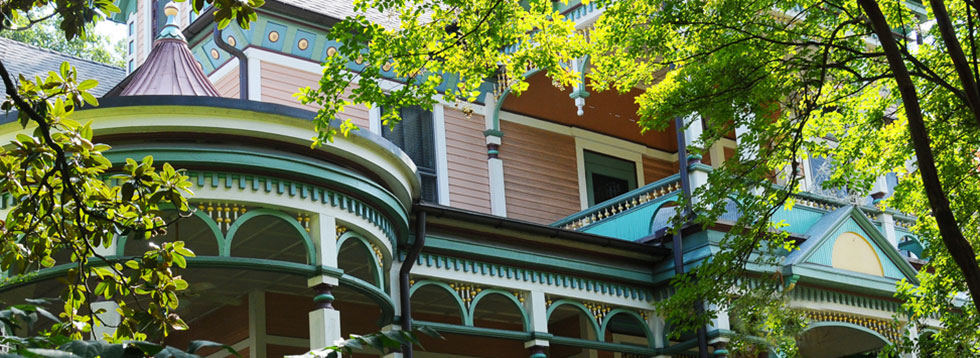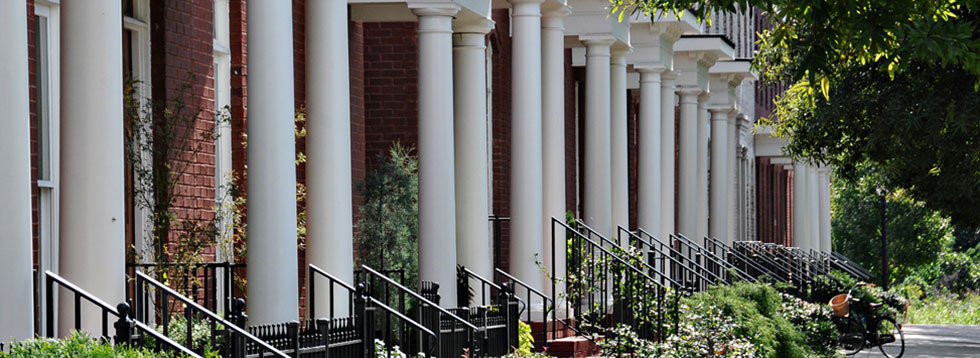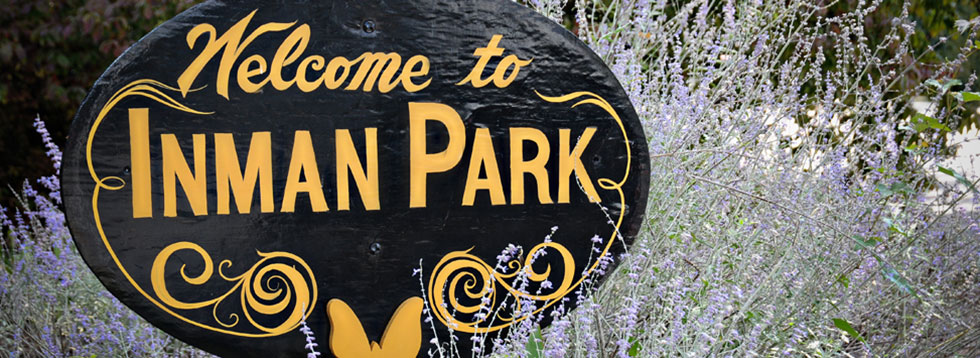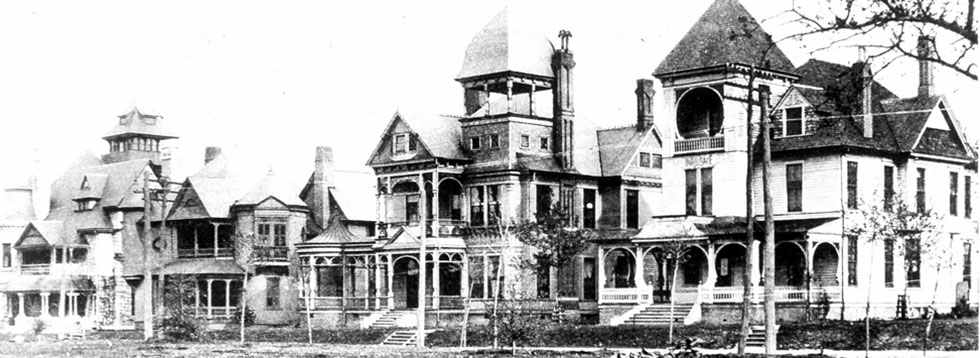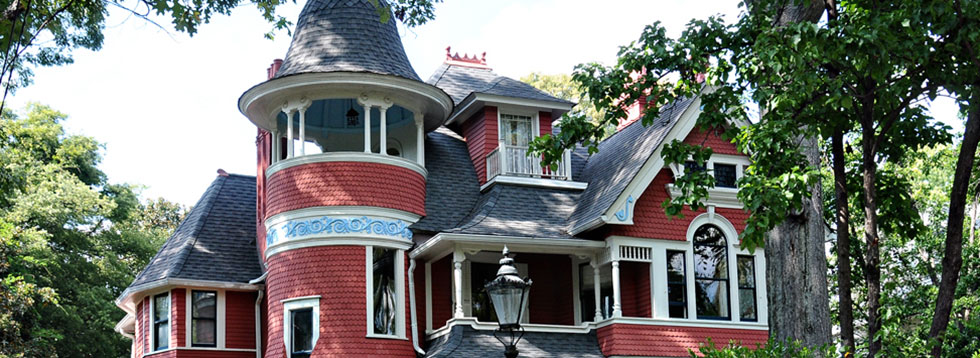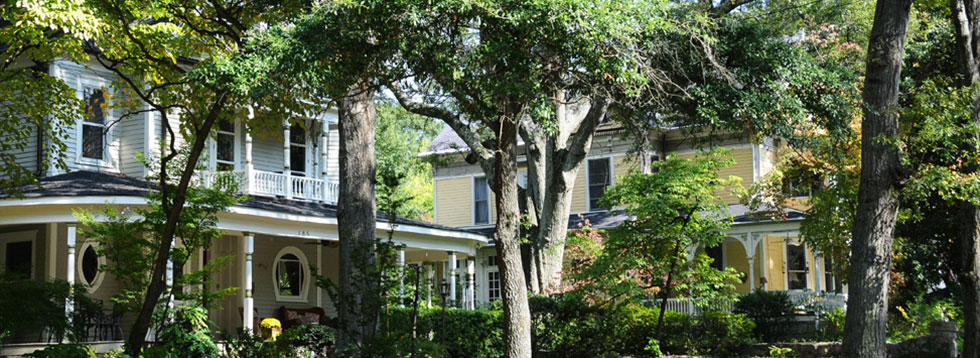Atlanta's second largest park wasn't supposed to be a park. What is now Freedom Parkway was conceived as a limited access, multi-lane toll road with 5 bridges over neighborhood streets to connect downtown to Stone Mountain Expressway and allow traffic to flow rapidly through "blighted urban neighborhoods". In the 1960's and early 70's, 219 acres of land, including approximately 600 residential housing units, commercial spaces and churches, were condemned and bulldozed.
In 1972, a Blue Ribbon Panel commissioned by Governor Jimmy Carter, declared that the road would not be built "at this time." The following years produced many plans and ideas of how to use the land, labeled the Great Park. One plan involved museums, an amphitheatre and housing.
The cleared land lay idle, overgrown with kudzu, until 1981 when ex-president Jimmy Carter, Mayor of Atlanta Andy Young and Georgia Department of Transportation Commissioner Tom Moreland struck a deal to create the Presidential Parkway, locating the Carter Presidential Library in the right-of-way. This new version of the expressway had amenities including "Tot Lots," playgrounds just a fence away from the high-speed, multi-lane road. Five bridges would go over neighborhood streets. Brown pavement would be used to "soften its appearance." Or, as the neighborhoods saw it, "lipstick on a pig". The same old pig.
What followed was an extraordinary example of citizen organizing. People from Inman Park, Poncey-Highland, Candler Park, Druid Hills, the city of Decatur, Lake Claire, Virginia Highland and East Lake banded together, litigated, lobbied and demonstrated through multiple attempts to build a highway in the vacant land.
The threatened in-town neighborhoods formed C.A.U.T.I.O.N (Citizens Against Unnecessary Thoroughfares in Older Neighborhoods) to coordinate litigation, fundraising, volunteers and lobbying. Phone trees, block captains and fliers gave those in opposition the ability to quickly mobilize large numbers of people. Thousands of opponents showed up at the Civic Center to publicly condemn the proposed road plan after the GaDOT released its Environmental Impact Statement that the road would have no impact on the surrounding area.
As legal battles drug on, another group, the Roadbusters, brought street theater, protests and non-violent civil disobedience into the mix. While CAUTION and hundreds of volunteers worked with City Hall, County governments, the State Legislature and Federal agencies, construction crews found the Roadbusters in trees they were supposed to cut down. Roadbusters came ready to be arrested and many were as they blocked bulldozers and made news.
Civil rights leader and then City Council Member John Lewis as well as Atlanta's first African American Mayor Maynard Jackson put their support behind the protests, contributing credibility, visibility and advice.
After years of lawsuits plus the election of 64 pro-neighborhood candidates, Maynard Jackson was re-elected mayor in 1989 and encouraged City Council to pass an ordinance to stop the Presidential Parkway. As part of yet another lawsuit, DeKalb Superior Court Judge Clarence Seeliger referred GaDOT, the City of Atlanta and CAUTION to mediation. Newly elected Governor Zell Miller urged the new GaDOT commissioner Wayne Shackleford to find a compromise. After more than 54 hours of negotiations, all parties reached a resolution, the Settlement Agreement, which was debated and voted on by each of the represented parties as well as each of the neighborhood organizations.
Freedom Parkway, an at-grade, low speed parkway with no truck traffic and no bridges over city streets, was to be built to provide access to the Carter Center. The remaining 200 acres of land were to be made into a City park with extensive biking and jogging paths, to be completed in time for the 1996 Olympics.
Freedom Park was born. The Freedom Park Conservancy was created to replace CAUTION. The Olmsted Park Society (later becoming Olmsted Linear Park Association) was formed to protect the parks along Ponce de Leon that were designed in the 1890s by the Frederick Law Olmsted as the backbone of the design of the Druid Hills neighborhood.
It has been 25 years since the halting of road construction and signing of the Settlement Agreement to preserve the intown neighborhoods. It is time to have a reunion party to celebrate.
Please put August 7th on your calendar. More details will to follow.

